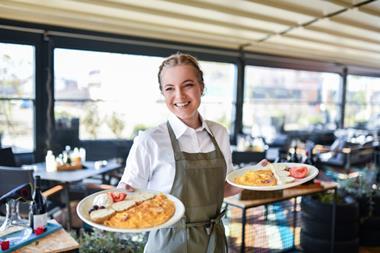While the development of new generation food halls across Europe may no longer be described as embryonic, it is most certainly still in the early stages. Cushman & Wakefield estimates there are approximately 100 food halls either already open or currently under construction in Europe’s major cities. C&W partner Thomas Rose investigates
Our research suggests that the potential for growth is huge. At least 200 venues, totalling over 400,000sq. m, are in the pipeline for delivery within the next decade in cities including London and Paris. That number could increase substantially if food halls become integrated into existing buildings.
How quickly these new food halls will appear and what form they are likely to take will depend on a large number of factors. We outline below the most significant of these from a commercial real estate perspective, along with some of the challenges which may arise.
One factor cannot be overstated: the success of individual food halls will be directly related to the ability of their operators to quickly and accurately identify and react to the rapidly changing trends influencing their customer base.
Food culture
The demand for new generation food halls is no fad. It is a long-term trend. The interest from consumers in how their food is sourced and produced has quickly become embedded into many national cultures across Europe. Celebrity chefs may come and go, but the interest they generate in food will be a constant. Food halls should have a diverse offer of ethically-produced food, including top quality, local ingredients with a clear provenance, built into their DNA as standard.
Demographic shifts
People are travelling more than ever before and the overall number continues to rise. The impact of this on food halls is two-fold. In the short term, travellers are increasingly attracted to food destinations. Operators have expressed surprise at the number of tourists heading in their direction.
Longer-term, when travellers return to their home (or adopted) countries, they are likely to continue to seek out the food-related experiences they enjoyed on their travels locally. This is particularly relevant to food halls sharing space with other uses (for example, within shopping centres), who may well find that they have a receptive audience already on their doorstep.
This well-travelled customer base of young people is particularly switched on to the food culture issues mentioned above – ethical production, provenance and sustainability are significant factors affecting their decision on where and what to eat. New generation food halls, with their inclination towards independent food vendors and suppliers, can adapt easily and quickly to the latest consumer demands.
Rise of the food & beverage sector
Oxford Economics figures show that eating out is on the increase. Average annual growth of consumer spending on eating out in Europe ran at over 4% in the decade to 2016. In the short term, food halls will enjoy a grace period as consumers flock to enjoy their novelty value. The most successful venues will be those that manage to capture that interest on an on-going basis, particularly in the longer-term, as traditional restaurants may begin to actively compete for their custom.
Macro-economic factors
The European economy is currently slightly outperforming many economists’ forecasts. However, the health of national economies varies considerably throughout the continent and the present low volatility levels are no guarantees for the future. Conventional wisdom on the impact of economic shocks on consumer spending says consumers will spend less. However, the experience of the last global financial crisis was that although total consumer spending fell, it was big-ticket items (such as foreign holidays or large furniture purchases) that were hit hardest. Leisure activities were less affected as consumers opted to spend their limited out-goings on what they perceived to be affordable luxuries. Eating out was one of those luxuries.
Food halls which can swiftly concentrate their attention on a certain visitor segment (for example, local residents) if another segment (such as tourist visitors) is affected will be best-placed to withstand challenging economic headwinds. Even in relatively positive economic times the operators of modern European food halls have been keen to ensure that their venues deliver high quality food at affordable prices. This focus on excellent value is therefore likely to remain a constant, whatever the prevailing economic conditions.
Location
Some operators, like Time Out Market are targeting central locations as they believe this will deliver them the greatest number of both tourist and local visitors. However, some of the food halls which have opened to date (including Time Out Market Lisbon) have successfully traded from more peripheral locations and have become destinations in their own right. While central locations will undoubtedly benefit from better transport connections, equating to a potentially higher footfall, food halls which are situated in other areas will not necessarily find themselves at a disadvantage. As existing operators have already found, their customers are a persistent and passionate crowd, so as long as the venue is adequately marketed it should be well-patronised. In future, being slightly off the beaten track could be a positive advantage, as food-loving locals and tourists alike seek out less mainstream venues.
Building type
The majority of new generation food halls in Europe are housed in second-hand structures. Some of these are historic market halls (like Stockholm’s Östermalms Saluhall) re-purposed for a slightly different role, but many are existing buildings that have been given a new lease of life. We believe that as the food hall concept evolves, new-build properties will become more common, not least because the space can be designed for its operator, rather than the other way round. And in large-scale urban regeneration projects building in a food hall from scratch could prove to be an attractive option for landlords and food hall operators alike.
Tech Trends
To what extent technology will disrupt the future food hall environment is an intriguing, and largely unknown, prospect. Current systems like digital food ordering and order management will have an obvious place, for those who wish to use them. Interactive apps that allow users to choose and pay for their food beforehand and have it presented to them when they arrive at the venue are equally possible.
But, given that human interaction, with fellow diners or food vendors themselves, is an important part of the food hall experience, automation such as robocooks or robot baristas may well be limited. However, social media platforms have been enthusiastically adopted by operators, where they play a crucial role in marketing. Shopping centre landlords and others who already have sophisticated social media architecture in place will be able to deploy it effectively with any food hall operation they choose to incorporate within their scheme.
The above is an extract from Cushman & Wakefield’s latest Food Halls of Europe report. The full report can be found here http://www.cushmanwakefield.com/en/research-and-insight/2017/food-halls-of-europe/











































